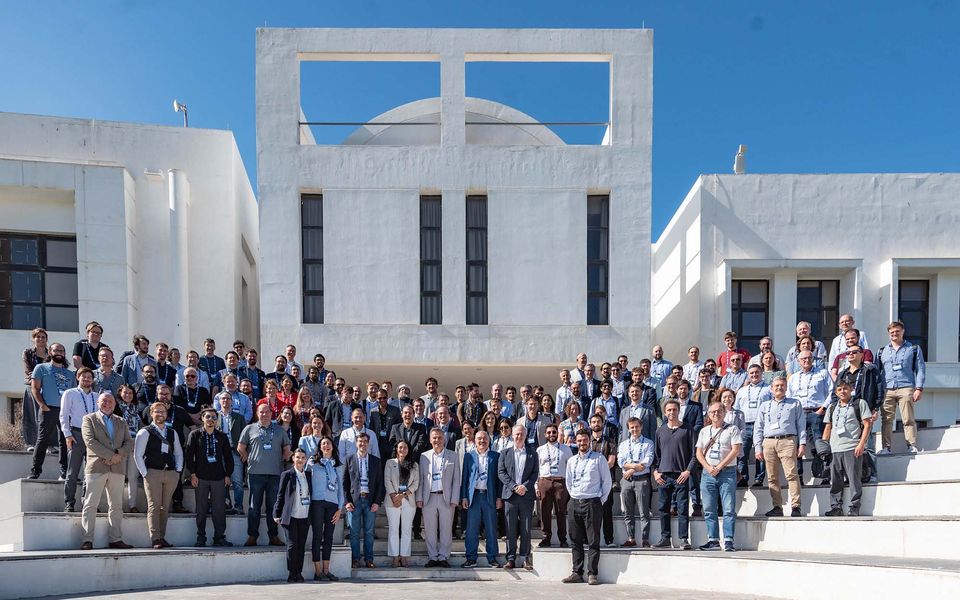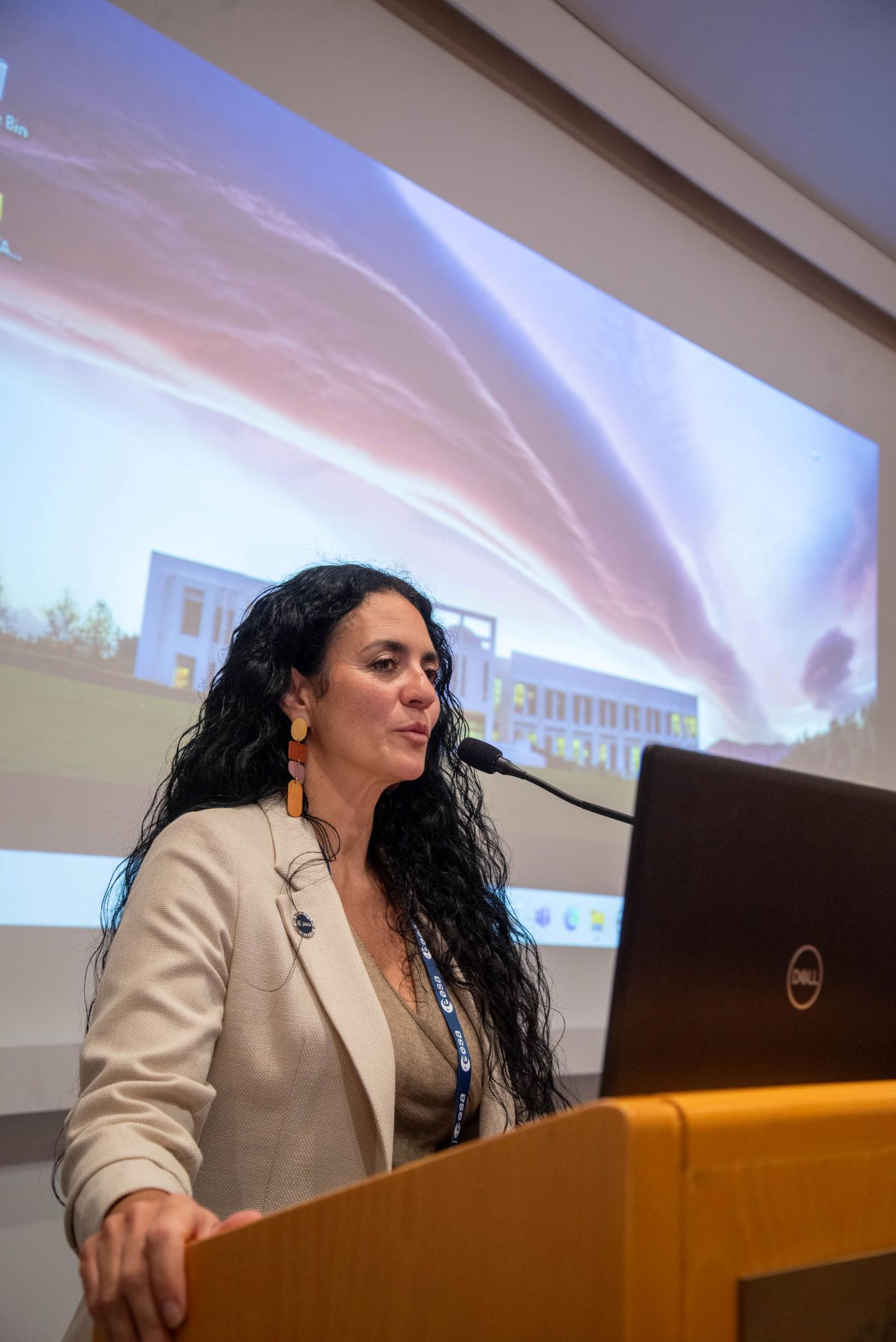
A group photo from the 7th International Quantum Technology Conference of the European Space Agency, hosted at the Foundation for Research and Technology (FORTH) in Iraklio, Crete, earlier in October. ESA’s goal is to create better equipment for future space missions, says Dr Kyriaki Minoglou.
Satellites and space technology may seem far away from us, but it is much closer than we think and inside everything we do. The 7th International Quantum Technology Conference of the European Space Agency (ESA), hosted October 7-9 at the Foundation for Research and Technology (FORTH) in Iraklio, Crete, illuminated new paths for the development of space technology. More than 150 conference participants from all over the world gathered on the island to discuss topics that are at the forefront of innovation in the field of quantum technologies.
The conference proceedings opened with greetings from Dr Josef Aschbacher, ESA director general, Dr Kyriaki Minoglou, head of the Optics, Robotics and Life Sciences Division at ESA, and FORTH President Vassilis Charmandaris.
“Quantum technology has been booming recently and has many applications in space, in a number of sectors: in Earth observation, in space exploration for new planets and black holes, in telecommunications. We are looking for technological upgrade solutions for each sector separately, but also as a whole. Our goal is to create better equipment than what we had when we sent the space machines out there: cameras with better resolution, GPS with greater precision, sensors more sensitive to the gravitational fields of the Earth and other planets. All of this will help the development of research,” Dr Minoglou tells Kathimerini.
But what does all of this have to do with our life on planet Earth? “Especially in our sector, the development of science and quality of life go together. For example, we are going to make our communications much more secure. Overall, satellites today are used in many aspects of our lives: with their help we communicate, travel, pay, book a taxi, but also see sudden changes in the weather, receive warnings about natural disasters, monitor climate change, develop security at all levels,” she explains. “All of this could not exist in its current form without the development of space technology.”
Dr Minoglou began her studies at the Department of Electrical Engineering of the Polytechnic School of Aristotle University of Thessaloniki, completed her PhD at the Demokritos National Center for Scientific Research, continued for a postdoctoral position in Belgium, and ended up at ESA with its pioneering scientific work. The division that Minoglou currently heads is multifaceted and pivotal for space technology. It includes the evolution of telescopes and cameras, the development of suitable robot vehicles, such as those that will go to the moon and other planets, but also studies on life in space, starting with the life of astronauts on spacecraft and the management of all related issues, from nutrition to waste.
 Dr Kyriaki Minoglou is head of the Optics, Robotics and Life Sciences Division at ESA.
Dr Kyriaki Minoglou is head of the Optics, Robotics and Life Sciences Division at ESA.
“ESA is doing a great job. Today, it is a pioneer in Earth observation satellites, such as Sentinel,” says Minoglou. That is why it is important for Greece to further develop its cooperation with the European Space Agency.
“Our country has significant benefits from its participation in ESA. The money we give as a subscription is returned and, moreover, it is an investment in the future. Programs are coming to research centers, universities, companies, etc. Young scientists are finding work and starting their careers very creatively and at a high level. There are already several contracts with Greek research groups, but we are lagging behind in industry,” she adds.
“In previous years, three important observatories in Greece – Helmos, Skinakas on Crete and Holomondas in Halkidiki – were upgraded with funds from the Recovery Fund. These observatories became optical, meaning they can have optical communication via laser and participate in corresponding programs,” she says.
For example, in July, the Aristarchos telescope on Mount Helmos, together with the observatory in Kryoneri, Corinth, took part in a major NASA and ESA experiment, where optical broadband communication was achieved with a spacecraft at a distance of 300 million kilometers from Earth.
ESA’s choice to host and organize the 7th Quantum Technology Conference on Crete, in collaboration with FORTH, “is clear recognition of the institution’s position as a strong partner,” Dr Minoglou says. “Its pioneering research and world-class facilities are crucial for the development of technologies that can shape the future of our missions.”
The existence of the Skinakas Observatory was also a reason for choosing Iraklio, as well as the fact that on Crete there are several young scientists who are already collaborating on European Space Agency programs.
Within the framework of the conference, FORTH and ESA signed a memorandum of intent for cooperation, aiming to strengthen existing joint projects in the fields of quantum technology, information technology, astronomy and astrophysics.
